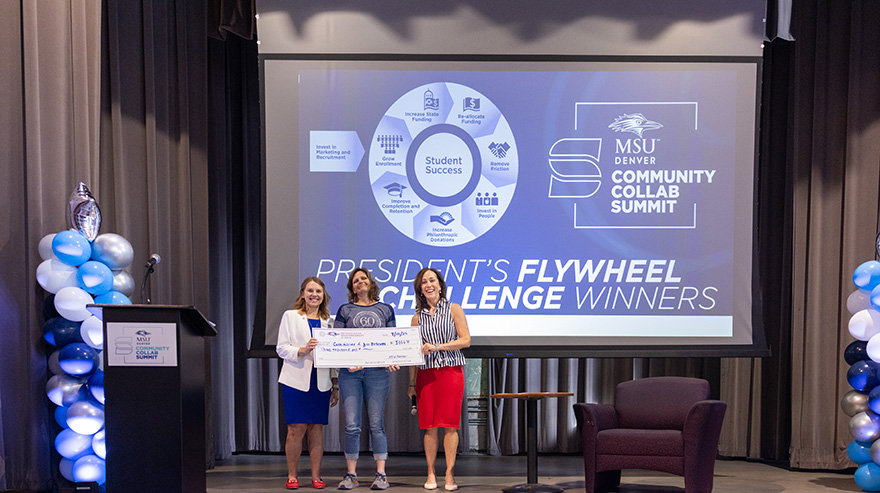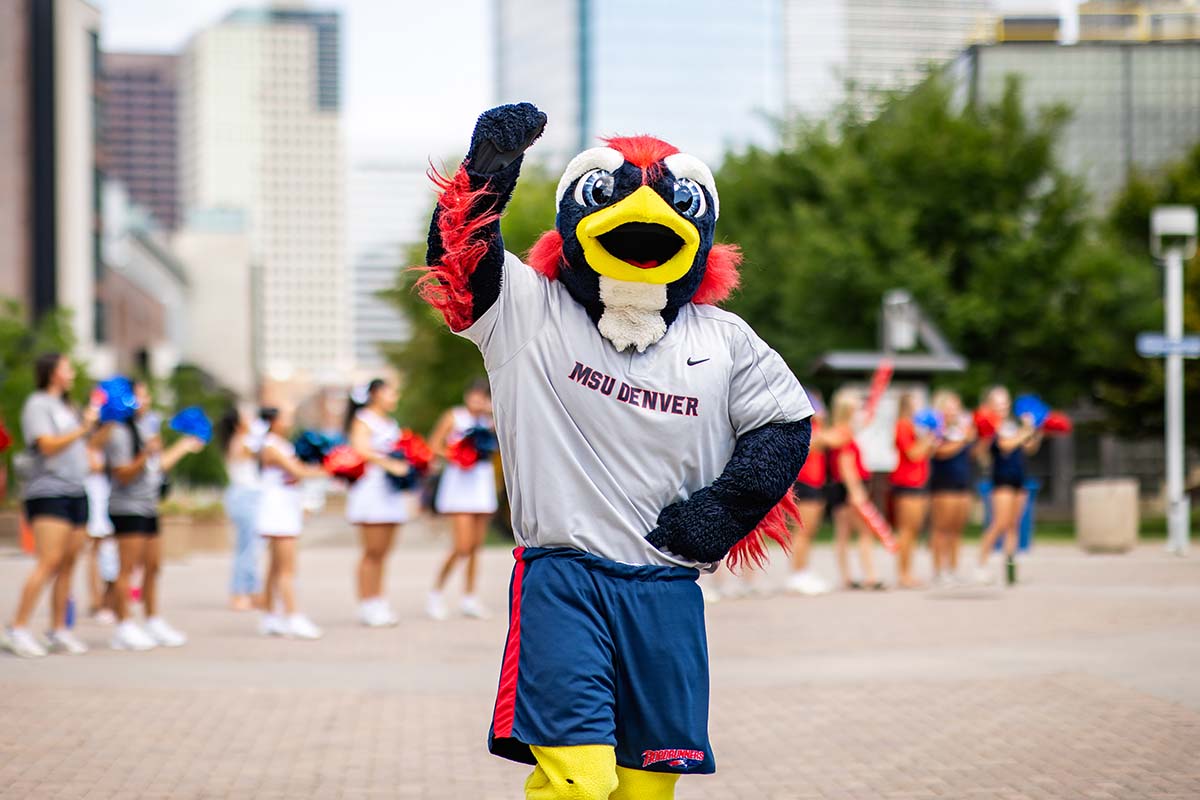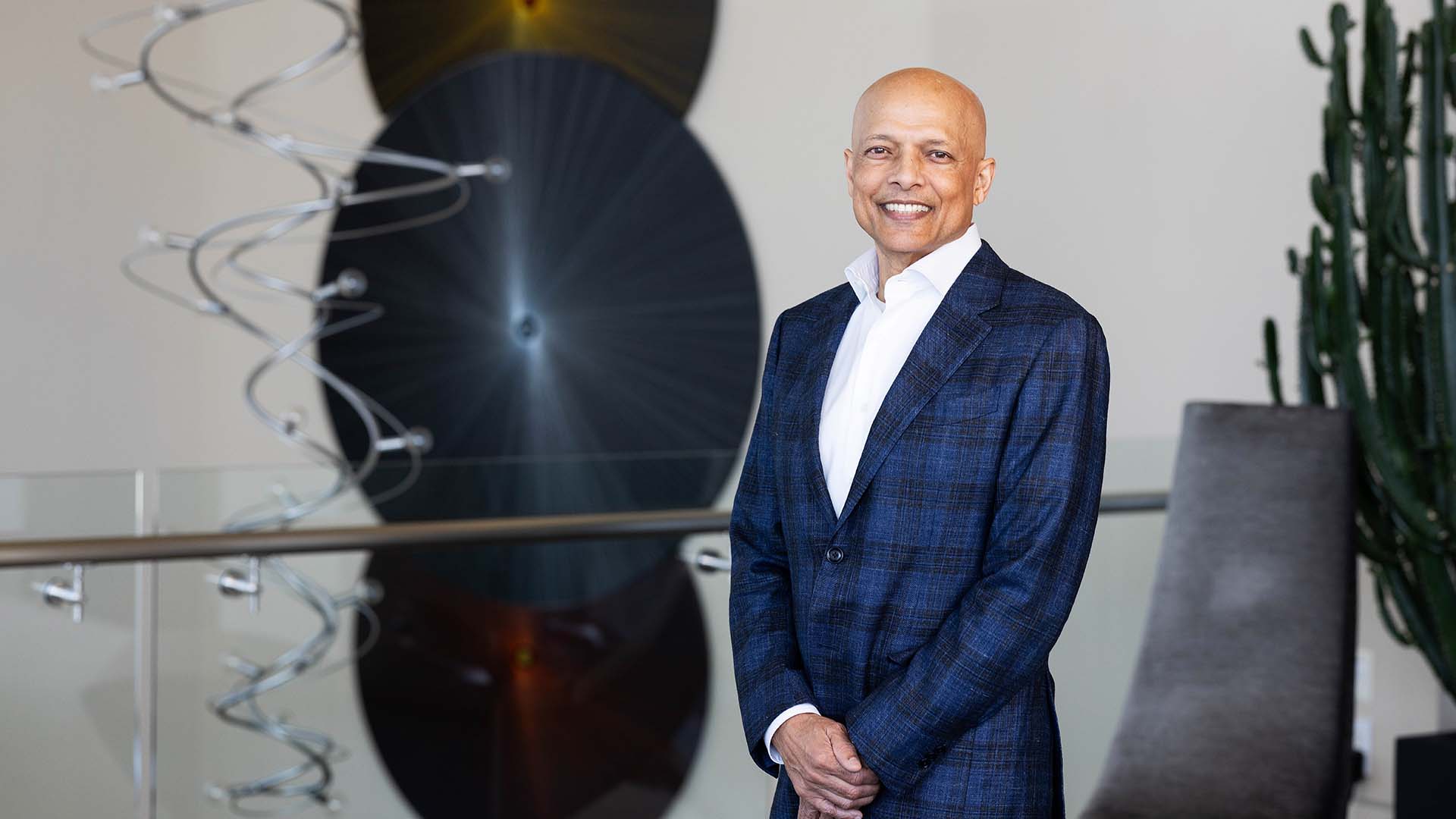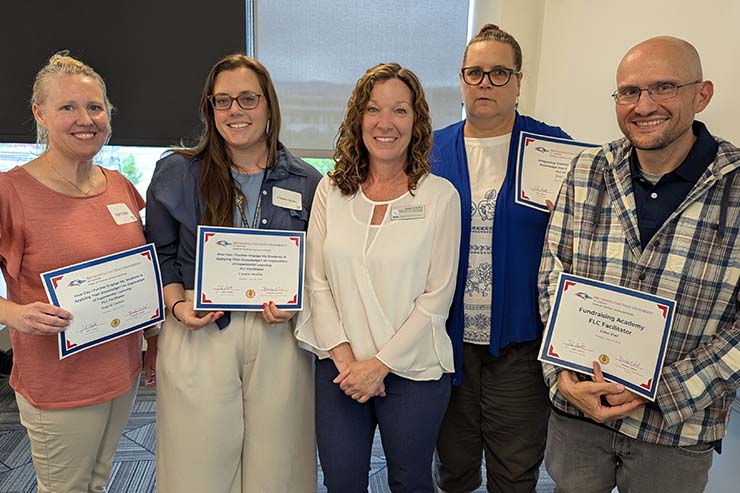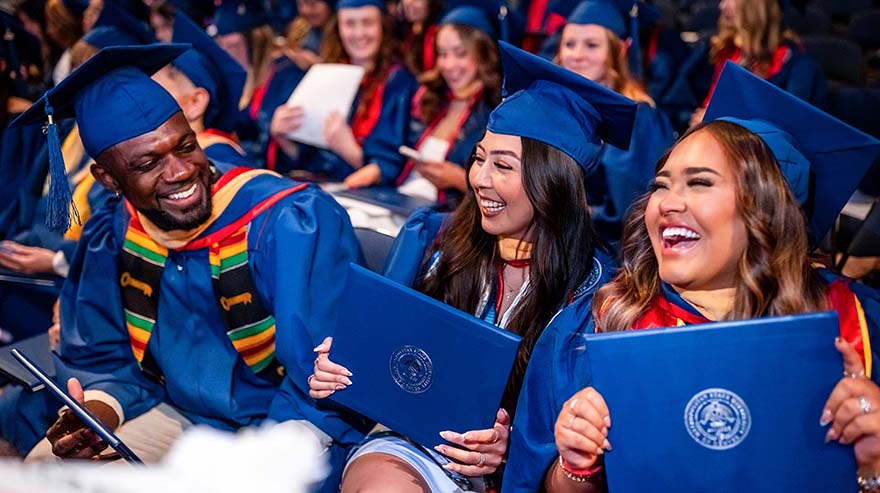A new approach to the University’s photography services and a plan to keep more students in class have saved MSU Denver thousands of dollars — and earned three Roadrunners recognition as the first winners of the President’s Flywheel Challenge.
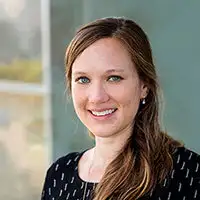 Amanda Schwengel, assistant director of Photography and Video Production in University Communications and Marketing, spotted a recurring cost that didn’t need to be there. Her team had been relying on the stock-photography service Shutterstock to fill image needs across MSU Denver’s RED online newsroom, the Early Bird employee-news site, the University website and other platforms. The subscription cost $4,200 annually and limited downloads.
Amanda Schwengel, assistant director of Photography and Video Production in University Communications and Marketing, spotted a recurring cost that didn’t need to be there. Her team had been relying on the stock-photography service Shutterstock to fill image needs across MSU Denver’s RED online newsroom, the Early Bird employee-news site, the University website and other platforms. The subscription cost $4,200 annually and limited downloads.
By researching alternatives and collaborating with colleagues across campus, Schwengel discovered that Adobe Stock was already available through Information Technology Services at no additional cost and offered similar capabilities.
“Amanda’s diligence and cross-departmental collaboration saved the University $4,200,” President Janine Davidson, Ph.D., said in announcing the award at this month’s Community Collab Summit in the Tivoli Turnhalle.
Schwengel’s solution earned her a $420 award — 10% of the savings.
Meanwhile, Jess Retrum, Ph.D., and Cath Kleier, Ph.D., focused their Flywheel Challenge submission on the high rates of D’s, F’s and withdrawals – so-called DFW rates.
Retrum and Kleier observed that the rates were significantly higher in gateway courses, “creating barriers to retention and graduation for historically excluded students,” Davidson said.
So the duo developed a “DFW playbook” to help faculty reduce attrition by adjusting course design, modality and support structures. Their innovation not only promises to keep more students on track to graduation but also reduces the costly impacts of attrition, estimated to be hundreds of thousands of dollars.
Retrum and Kleier received a $3,000 award, money that will go to chairs and departments who accomplish interventions to reduce DFWI rates, Retrum said. Kleier plans to help publish an executive summary with best practices from each department’s playbook by the end of the semester.
About the challenge
Launched in 2024, the Flywheel Challenge invites employees to identify inefficiencies that save the University time and money. Winners receive a percentage of the savings, up to $10,000.
“Part of how we deliver on our mission while effectively stewarding tuition dollars and state funds is finding efficiencies,” Davidson said.
Submissions are primarily evaluated financial savings and time efficiencies (hours and dollars saved), as well as alignment with mission, CADRE values, the President’s Flywheel, ease of implementation and the clarity and effectiveness of the proposal’s purpose and methodology.
Have your own ideas for cost-saving strategies and operational improvements?
Winning submissions
Flywheel Challenge Proposal: Adobe Stock vs. Shutterstock
By Amanda Schwengel
Problem Description
Some of the stories for MSU Denver’s internal communications platform, the Early Bird and external online newsroom RED have relied on the royalty-free image site Shutterstock for content, when we are unable to photograph or produce imagery.
Shutterstock was implemented a few years ago and the Communications and Marketing team used a team subscription to download assets. While Shutterstock offers a vast library of high-quality visual content, it comes at a significant annual cost of $4,200 and limits users to a certain number of credits for downloads.
Budget Info
- Annual Savings: MSU Denver will save $4,200 annually by eliminating the Shutterstock subscription and using Adobe Stock, which is already included in our enterprise tech stack through ITS.
Department/Unit
- University Communications and Marketing
Measuring Success
Success can be measured by:
- High click rates of RED stories and the Early Bird for internal and external audiences.
- Revamped designs for RED and the Early Bird in recent years.
- Ability to post more photos.
Opportunity and Risk
- Opportunity: Already implemented, since the Shutterstock subscription ended in the summer.
- Risk: May not always find images that fit our needs.
- Benefit: Aligns with our existing tech stack.
Previous Work
- The Shutterstock subscription expired in June.
- Adobe Stock has since been used effectively for stock visual needs.
Flywheel Challenge Proposal: Chairs’ DWFI Playbook Development
By Cath Kleier and Jess Return
Background
DFWI (D’s, F’s, Withdrawals, Incompletes) — also called “unproductive credits” — are unproductive because they represent barriers to our students continuing in their programs. This creates a major snag in the university’s flywheel of retention.
Key points:
- Gateway courses (the first credit-bearing course in a program) typically have higher DFWI rates.
- Online courses, particularly asynchronous and in a student’s first 30 credits, tend to have higher DFW rates than in-person courses.
- DFW rates are barriers to retention and graduation, especially for historically excluded students.
- Attrition is a large cause: some students simply stop attending class. This makes inclusive pedagogy and accessible course design critical.
- DFW rates can be driven by the course itself, modality, term, instructor or level of student support.
Academic Department
- Office of Faculty Affairs and Council of Chairs and Deans
Budget Info
- Total: $1,800
- Incentives for Chairs who initiate innovative ideas that select courses and address DFWIs.
Consulted
- Office of Faculty Affairs (OFA)
- Deans
- Council of Chairs and Deans (CoCD)
Department/Unit
- Academic Affairs
Measuring Success
- DFWI rates can be measured at the college or department level.
- The Student Success and Learning (SSL) group is already focused on DFWI rates, but this initiative adds:
- Networking and partnership opportunities.
- Incentives for Chairs to lead efforts.
- Monitoring and evaluation will be straightforward.
Opportunity and Risk
- Risk Level: Very low, since it builds on existing responsibilities of chairs and deans.
Previous Work
- No prior attempt to address the problem in this way.
- Timeline:
- University-wide success could take 2–3 years.
- Initial results could be seen within 1–2 semesters.
Success Description
- Goal: Reduction of DFWI rates.
- Each department should determine its own goals, since challenges vary across disciplines.
- Success includes articulating solutions that address department-specific barriers to student success.




